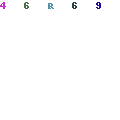Dinosaur or abstract art sculpture, you decide
The SIUE entrance to University Park is guarded by a statue, one some people may view as a dinosaur. But was that the artist’s original idea? According to Eric Barnett, director of the University Museum, it wasn’t.

Richard Hunt poses next to his latest sculpture at the SIUE East St. Louis campus. photo courtesy of Rich Walker.
Sculptor Richard Hunt is perhaps one of Illinois’ most successful sculptors, according to Barnett, whose work includes dozens of large abstract pieces. Hunt began working as a sculptor in 1955 as a student, according to his studio’s website. He began exhibiting his sculptures around Chicago at art fairs, small galleries, and local art centers. From there, his work grew.
“During the twelve years that followed, my sculptural development grew as a private, independent, studio-based, self-generated activity that responded to the stimuli I supplied and the skills I could master,” according to Hunt’s artist’s statement.
For sculptor’s, their first major public commission represents their ‘big break.’ Unlike painters, printmakers, and other artists, sculptors have a much more difficult time keeping an inventory, due to the size and scope of their work.
“It’s hard for young sculptors to get that first big commission. Most people think that sculptor’s are like printmakers or painters where they have an inventory of things they are trying to sell,” said Barnett. “When they are young, they cannot afford to make things. It has to be done as a commission. Getting that first big break is critical to [a sculptor’s] career.”
For Hunt, that break came when George Irwin, the first chairman of the Illinois Arts Council, commissioned a piece for his private residence in Quincy, IL. The statue, completed in 1971, is entitled “Large Natural Form #1” and is constructed of cor-ten steel. This type of steel is ideal for outdoor sculptures, as it is made to withstand the tests of nature.
“Weathering steels, such as […]Cor-Ten® exhibit superior corrosion resistance over regular carbon steel as a result of the development of a protective oxide film on the metals surface which slows down further corrosion,” according to Central Steel Service, Inc.’s website.
SIUE received the statue in 1997 when Irwin donated it to the university. When Hunt originally constructed the statue, he assembled it at Irwin’s residence. When it was moved to SIUE, however, it was moved in one piece. The statue was delivered to SIUE from Quincy using a lowboy trailer. According to Barnett, the driver had to choose the route carefully because it was so large.
“When he originally got the commission from George Irwin, he did much of the assembly right there at [Irwin’s] house. But in getting it here, we didn’t disassemble it. It was very, very tricky because it is definitely oversized for the roads,” said Barnett.
When the statue arrived, it was placed by the Operating Engineers Training Program who drove a crane across campus to move the statue, according to Barnett. Barnett stated that even though the statue is large and is in a prominent location, many people do not see it.
“It’s one of those things that is big and it’s out there in public view. People just don’t think about it because they drive past it so often they don’t see it anymore,” said Barnett. “The [statue] at the entrance to University Park, people read a lot of stuff into it, like dinosaurs, which really, I don’t think was any of [Hunt’s] intent. To him, it was just an abstract composition,” said Barnett.
SIUE also has one of Hunt’s newest pieces, recently installed at the East St. Louis Center. Hunt was commissioned by the Art and Architecture in 2010 to construct the piece. According to Barnett, Hunt gave up some of the commission money so another sculptor, Edna Petty, would be able to sculpt a statue.
“It goes to show what a wonderfully generous person Richard Hunt is because he didn’t have to do that. But, he wanted to see Edna get a big piece as well,” said Barnett.

Richard Hunt's 2010 statue entitled "Of the River Mounds and Bridges", at the SIUE East ST. Louis campus. photo courtesy of Rich Walker.
Filed Under: Faculty News















